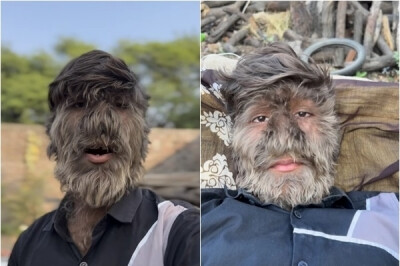
Milan, Italy – Lalit Patidar, an 18-year-old from India, has officially entered the Guinness World Records as the person with the most facial hair in the world, boasting an astounding 201.72 hairs per square centimeter. This remarkable feat comes as Patidar navigates life with Ambras Syndrome, a rare genetic condition that causes excessive hair growth.
Patidar's journey to the record books recently took him to Milan, where he underwent an official measurement by local hair specialists. After carefully shaving a small section of his face, experts confirmed the density of his facial hair, solidifying his place in history.
Ambras Syndrome, often referred to as "werewolf syndrome," is an incredibly rare condition, with only about 50 documented cases since the Middle Ages. The syndrome causes excessive hair growth across the body, with Patidar's face being over 95% covered.
Despite the challenges of living with such a visible condition, Patidar remains positive and self-assured. "I am speechless," he expressed after receiving his Guinness World Record certificate. "I don't know what to say. I am happy to receive this recognition."
Patidar also addressed the occasional negativity he faces, stating, "Most people are kind to me, but some are not." He firmly asserts, "I like myself as I am and don't want to change," rejecting any pressure to alter his appearance.
Historically, individuals with Ambras Syndrome faced exploitation, being displayed as curiosities in circuses or kept as novelties by nobles. Today, Patidar's story serves as a powerful message of self-acceptance and resilience.
Ambras Syndrome, while rare, is characterized by excessive hair growth on almost all parts of the body, excluding the palms, soles, and genitals. The hair can grow up to 10cm in length, leading to the "werewolf" nickname.
The condition can be congenital, often due to genetic factors, or acquired through certain medications or environmental factors. While there is no cure for congenital Ambras Syndrome, acquired cases may see a reduction in hair growth once the causative factor is removed.
Patidar's record-breaking achievement not only highlights the uniqueness of his condition but also celebrates his courage to embrace his individuality.
[Copyright (c) Global Economic Times. All Rights Reserved.]






























